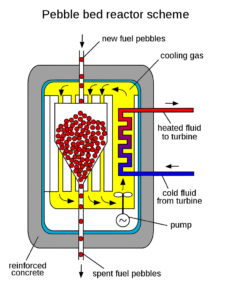Many new advanced reactor designs that are being developed by companies like X-Energy and Kairos propose on-line fueling for their reactors. This means that the reactor does not need to be shut down to change the fuel. While this feature can allow power plants to continue to produce energy while the reactor is re-fueled, online fueling can pose a challenge for nuclear security and safeguards. According to Benjamin Wellons, “With online refueling, fuel elements with very high radioactivity levels will need to be measured for various operations, safety, and security purposes.” Wellons worked with Prof. Shikha Prasad, a Center for Nuclear Security Science and Policy Initiatives (NSSPI) Faculty Fellow, to improve in-core and next-to-core measurements for burnup to be used in materials control and accounting.

“This work is towards the development of an autonomous detection method for advanced and harsh reactor environments, such as many advanced reactor designs which are currently being built and funded by the US government,” said Wellons.
Wellons created an open-source code for fast signal processing of particles detected with organic/inorganic scintillation detectors. His code, RadSigPro 1.0 was used to generate data for developing new machine learning techniques for particle detection. He used the code to model the programmable logic design of a field-programmable gate array and to test the results. Finally, Wellons tested and compared his code’s tallies against other methods.
Wellons’ method yielded a relatively high classification accuracy of 96-97% with 100-400 nanoseconds of data. The RadSigPro pulse processing method was developed and verified using organic scintillation detectors and a spontaneous fission source that emits predominantly high energy neutrons and gamma rays to mimic the high radiation environment in and around the reactor core. This tested its accuracy for use for material accountancy applications in some of the new advanced nuclear reactor designs.

“The increased rate of radiation from these designs necessitates increased detection capabilities as well,” explained Wellons. “Without proper identification and understanding of the radioactive material present in nuclear reactors, security, safety, and operational risks ensue.”
Benjamin S. Wellons graduated with a Master of Science degree in nuclear engineering from Texas A&M University in summer of 2022. He received his B.Sc. in Applied Physics from Coastal Carolina University in 2020. As a NSSPI student, he also worked with Dr. Shikha Prasad on modeling a detection environment for the Los Alamos Neutron Science Center at LANL in addition to his thesis research. Upon graduation, Wellons joined the Cyclotron Institute at Texas A&M and is pursuing a Ph.D. degree in Physics.